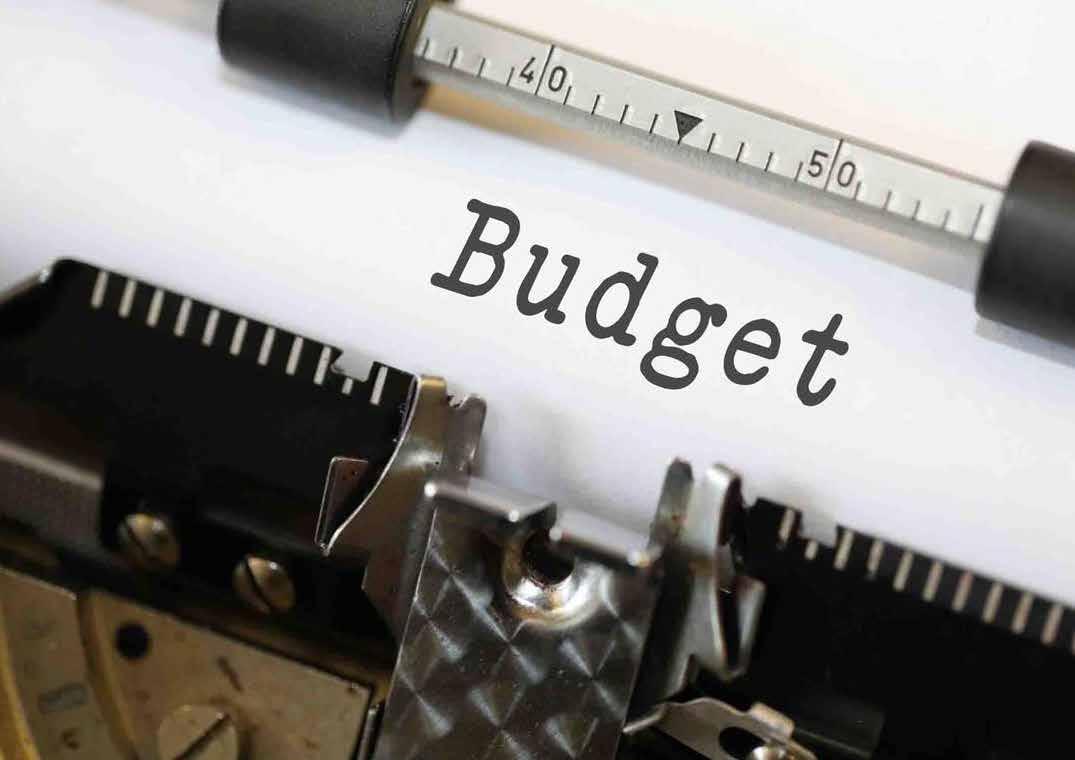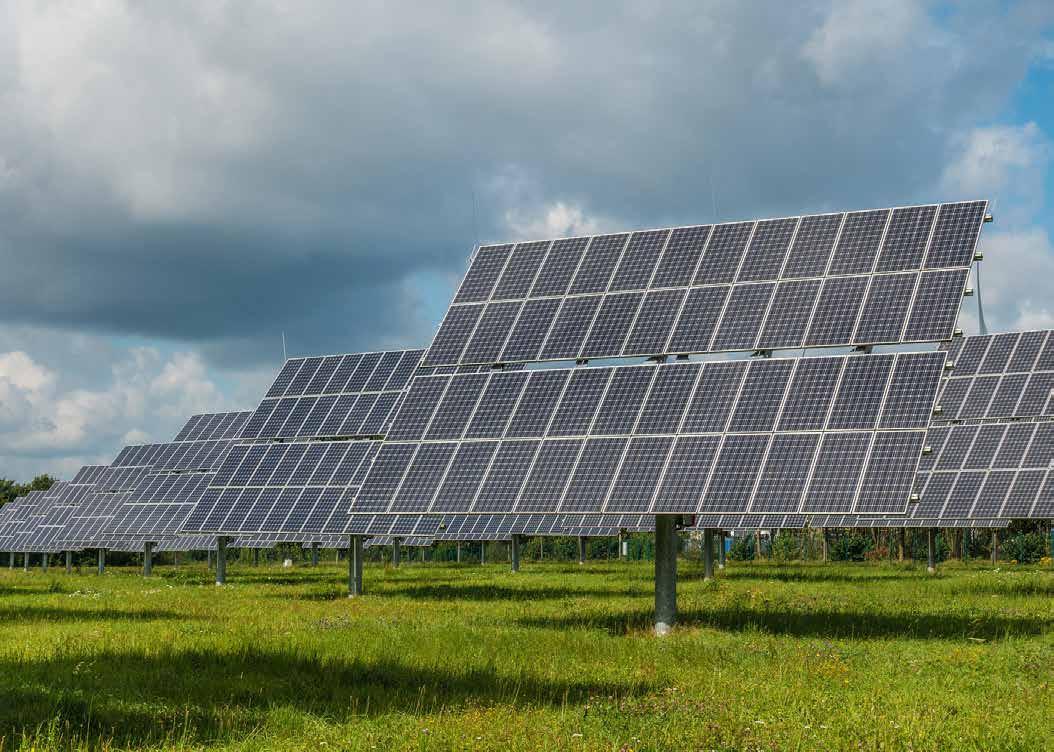
7 minute read
India’s Renewable Energy Making Rapid Strides 2019 - Outlook 2020
Offshore Wind Power in India The National Offshore wind energy policy was notified in October 2015 with an objective to develop the offshore wind energy in the Indian Exclusive Economic Zone (EEZ) along the Indian coastline of 7600 km. eight zones are identified each in Gujarat and Tamil Nadu having cumulative offshore wind energy potential of 70 GW.
Inter State Transmission System (ISTS) Phase-II (66.5 GW REZ) Potential renewable energy zones (66.5 GW – Solar 50 GW and Wind 16.5 GW) have been identified in the states of Tamil Nadu, Andhra Pradesh, Karnataka, Gujarat, Maharashtra, Rajasthan & Madhya Pradesh and a comprehensive transmission scheme was evolved integrating these renewable energy zones. The scheme is being implemented in phases by way of either Tariff Based Competitive Bidding (TBCB) or through Regulated Tariff Mechanism (RTM) by PGCIL. The TBCB bids are being carried out by PFC and REC. The allotment of works in TBCB or RTM is done by established committees of transmission constituted by the Ministry of Power. Of this, Phase-I projects (for evacuation of 12.4 GW) have been bid out, awarded and are under implementation. Phase-II projects (for evacuation of approx. 15 GW) have been allotted by Ministry of Power in October/November 2019 and the bids have been issued by PGCIL/PFC. The Phase-III (approx. 39 GW) projects are under approval of the National Committee on Transmission.
Payment Comfort
Opening of LCs by all DISCOMs/ distribution licensees for all producers Ministry of Power has issued an order regarding opening and maintaining of adequate Letter of Credit (LC) as Payment Security Mechanism (PSM) under Power Purchase Agreements (PPAs) by Distribution Licensees (DISCOMs). Further, the Ministry of Power has instructed Power System Operation Corporation Ltd. (POSOCO) that according to the Procedure for Scheduling of power to Distribution Company, Power will be scheduled for dispatch only after a written intimation is given to the appropriate Load Despatch Centre (LDC) i.e. NLDC/RLDC/SLDC that Letter of Credit (LC) for the desired quantum of power w.r.t the generating stations has been opened.
Term loans to DISCOMs for clearing outstanding payments of RE generators The Ministry has requested PFC/REC/IREDA to extend short term loan to DISCOMs for the purpose of making payments to renewable energy generators.
Energy Storage SECI have floated two tenders which include battery storage systems: - 1. 1200 MW tender with requirement of supplying power during evening/morning (six hours) peak, with battery storage system. 2. 400 MW round the clock renewable, this will also come with battery storage system.
Second Assembly of the International Solar Alliance (ISA) The Ministry hosted the second assembly of International Solar Alliance (ISA) on 30th and 31st October 2019 New Delhi. On 30th October 2019, coordination and consultation meetings on different aspects of ISA programmes and initiatives were held. The Assembly met on 31st October 2019 & was presided over by Shri R.K. Singh, Hon’ble Minister & ex-Officio President of ISA. Delegations from 78 countries participated in the Assembly including 29 Ministerial delegations of which 25 are from ISA member countries, two from signatory countries, and two from prospective member countries. The Assembly deliberated upon ISA’s activities and new proposals for accelerating development and deployment of solar energy in ISA member countries and approved Rules and Procedure of the Assembly, Manual of Regulations of ISA, and Work Programme and Budget for the year 2020.
Global Solar Event for commemorating 150th birth anniversary of Mahatma Gandhi The Ministry in association with IIT Bombay organised the Global Student Solar Assembly to commemorate the 150th Birth Anniversary of Mahatma Gandhi and to promote the Gandhian idea of sustainable living. Over 6,800 students from the National Capital Region created Guinness world record by lighting the largest number of solar lamps together at Indira Gandhi Stadium Complex, New Delhi.
Dispute Resolution Mechanism During the period MNRE set up a Dispute Resolution Mechanism for wind/solar projects to consider the unforeseen disputes between solar/wind power developers and SECI/NTPC, beyond contractual agreement. This mechanism will help in smooth implementation of solar/wind energy projects in India, by expeditiously resolving, unforeseen disputes that may arise beyond the scope of Contractual Agreements.
Off-Grid Solar PV Applications Programme Phase III Government is implementing Phase-3 of the Off-Grid Solar PV Applications Programme for Solar Street Lights, Solar Study Lamps and Solar Power Packs. Based on the demand for solar street lights and solar study lamps sanction has been issued to States; EESL has completed centralised tendering for solar street lights and solar study lamps.
Provision has been made for financial support up to 90% of the benchmark cost of the system for NE States, Hilly States/UTs and Island UTs; up to 30% of the benchmark cost of the system for other States. Solar study lamps for students will be provided in NE States and LWE affected areas with 85% financial support from the Central Government.
Targets: 118 MW of off-grid solar power systems during 2018-20.
Atal Jyoti Yojana (AJAY) Phase-II
Applications covered: Solar Street Lights.
Financial support: 75% of the cost by MNRE and balance 25% through MPLAD.
Targets: A total of 3,04,500 Solar Street Lights (SSLs) will be installed in the following states/ regions:
i. States of Uttar Pradesh, Bihar, Jharkhand, Odisha and Assam, which were covered in Phase-I of the Scheme as there is additional demand in these States.
ii. Hilly States/UTs of Jammu & Kashmir, Himachal Pradesh and Uttarakhand.
iii. North Eastern States including Sikkim.
iv. Islands of Andaman & Nicobar and Lakshadweep.
v. Parliamentary constituencies covering 48 aspirational districts of States other than those covered in (i) to (iii) above.
Current Status: Ph-II of the Scheme is under implementation. Consent letters for installation of 1,31,586 SSLs have been received from 120 Hon’ble MPs against which sanction from DMs has been received for 31,426 numbers of SSLs and 13,583 SSLS have been reported installed.
Source: News Feeds
BUDGET 2020: WHAT DOES THE INDIAN SOLAR INDUSTRY EXPECT?


As the industries, businesses and financial sector set high hopes from the upcoming budget, we at SolarQuarter are keen on understanding what the solar industry really wants.
The overall industry sentiments call for standardisation of captive renewable energy policy across states to promote open access purchase of power, need for increase in fund allocation to MNRE and SECI to facilitate growth of rooftop solar; reduction in GST rates as there is no input credit that can be claimed by power companies, need to rectify absence of netmetering systems across states, rationalisation of indirect taxes, addressing the credit squeeze to bring back liquidity into the system, clarity on provisions pertaining to the recovery of dues by National Company Law Tribunal (NCLT), exemptions on surcharges and duties, and lot more. In a nutshell, the industry demands stability of policies by addressing regulatory uncertainties that impact investor confidence from pumping in fresh investments to promote solar sector growth in India.
Let’s hear what the industry has to say.
Mr. Sanjeev Aggarwal, Managing Director & CEO, Amplus Solar
“The last year has been full of challenges for the solar industry and we hope that this year’s budget will provide the much-needed impetus to the solar industry. We believe that higher investments should be dedicated to improving and modernising the transmission networks so that power from renewable sources can be evacuated on a real-time basis across the country. We should provide open access to all industries so that they procure the lowest cost of electricity including from renewable sources that will improve their competitiveness in manufacturing.” There is also a need for a standardised uniform captive renewable energy policy at the national level, to promote open access purchase of power across states, unlike the current scenario where every state has a different policy. This would enable the transmission of power from states with higher renewable energy potential to those with lower, facilitating C&I consumers to have access to low-cost renewable energy. The government should also make sure that the confusion regarding GST goes away and the GST is notified at 5% as was the original intent during the GST roll-out phase. Subsidies and incentives should be extended in the newer technology areas like battery storage and e-mobility. Along with greater focus on electric vehicles, the government should also address related feasibility issues for a substantial roll-out, like increasing the number of charging stations and making them more accessible. The rooftop solar market continues to grow but there are several challenges including regulatory uncertainty that still pose a threat. Restrictive policies, like absence of net metering should be rectified across the states. To compensate the state distribution companies, there should be an increase in fund allocation to MNRE and SECI to facilitate the growth of rooftop solar.









